Lucca Animation
Lucca Comics & Games presents:
2009, 18-22 March
International Animated Film Festival
You are in: Home > Special programmes > Barry Purves, a Life on Stage
Barry Purves, a Life on Stage
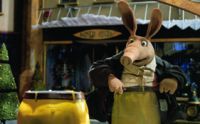 In introducing his book Stop Motion: Passion, Process and Performance (Focal Press, 2007), Barrry Purves talks about his fascination for magic and draws a parallel between puppet animation and the illusionist tricks. The enchantment the audience gets from the vision of Barry Purves works is actually nothing less than the one of a child that sees a rabbit coming out of a hat. Purvers career is a complicated path. He debuts in theatre, as a stage manager and actor, after his university studies in Manchester in theater and Greek tragedy (1973-1976) but, once he meets animation, he doesn't hesitate, choosing puppets body language that he considers superior to the one of live actors.
In introducing his book Stop Motion: Passion, Process and Performance (Focal Press, 2007), Barrry Purves talks about his fascination for magic and draws a parallel between puppet animation and the illusionist tricks. The enchantment the audience gets from the vision of Barry Purves works is actually nothing less than the one of a child that sees a rabbit coming out of a hat. Purvers career is a complicated path. He debuts in theatre, as a stage manager and actor, after his university studies in Manchester in theater and Greek tragedy (1973-1976) but, once he meets animation, he doesn't hesitate, choosing puppets body language that he considers superior to the one of live actors. 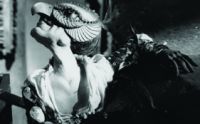 From 1978 to 1986 cartoons and animated series for kids see the light, including Chorlton and the Wheelies, Cinderella, The Pied Piper of Hamelin, Dangermouse and The Wind in the Willows, all produced by Cosgrove Hall Productions. He works in the following years on commercial and pilots for Aardman, thanks to which he can produce his first auteur short film: Next. After this first positive experience, Purves founds, together with Glenn Holberton, Bare Boards Productions, that allows him to produce both commercials and films that garner Academy Award and BAFTA nominations, besides awards from juries all over the world: Screen Play (1992), his masterwork Rigoletto (1993), Achilles (1995), Gilbert & Sullivan - The Very Models (1998). In 1996 the collaboration with Cosgrove Hall Productions begins again, making possible the birth of Brambly Hedge, Postman Pat, Fifi and the Flowertots, and the more recent series of 52 episodes Rupert Bear - Follow the Magic (2005-2007). Simultaneously, he comes back to theatre as a writer and director, like he is still doing today, and start his work as teacher.
From 1978 to 1986 cartoons and animated series for kids see the light, including Chorlton and the Wheelies, Cinderella, The Pied Piper of Hamelin, Dangermouse and The Wind in the Willows, all produced by Cosgrove Hall Productions. He works in the following years on commercial and pilots for Aardman, thanks to which he can produce his first auteur short film: Next. After this first positive experience, Purves founds, together with Glenn Holberton, Bare Boards Productions, that allows him to produce both commercials and films that garner Academy Award and BAFTA nominations, besides awards from juries all over the world: Screen Play (1992), his masterwork Rigoletto (1993), Achilles (1995), Gilbert & Sullivan - The Very Models (1998). In 1996 the collaboration with Cosgrove Hall Productions begins again, making possible the birth of Brambly Hedge, Postman Pat, Fifi and the Flowertots, and the more recent series of 52 episodes Rupert Bear - Follow the Magic (2005-2007). Simultaneously, he comes back to theatre as a writer and director, like he is still doing today, and start his work as teacher. 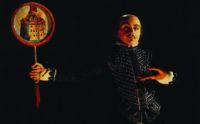 Peculiar in its experimentation is Hamilton Mattress (2001), a short film for a younger audience, where he is just director and entrusts different animator to realise each one a single scene, allowing the individual talents to be fully expressed. Hence, even if it is not simple defining which is the main occupation of Barry Purves, it is anyway clear how all of his experiences gather and mesh in his works to create a unique language of extraordinary beauty.
Peculiar in its experimentation is Hamilton Mattress (2001), a short film for a younger audience, where he is just director and entrusts different animator to realise each one a single scene, allowing the individual talents to be fully expressed. Hence, even if it is not simple defining which is the main occupation of Barry Purves, it is anyway clear how all of his experiences gather and mesh in his works to create a unique language of extraordinary beauty.In his filming, he borrows from the theatrical mise en scène the coordination of the different languages: art direction and light design, costume and sound design, mime, recitation and dance. But what is especially taken from the theatre is the unique relation with the actor-puppet, an individual with well defined characteristics shaped up by the expert hands of the director.
Purves is in fact especially renowned as being one of the greatest animators of objects and puppets; it is well known his collaboration on Tim Burton's Mars Attacks! (1996) and the work as previz animation director in King Kong (2003) by Peter Jackson, but on his resume there are also more than seventy commercials, including the funny samurai duck enemy of bacteria. Purves makes an art out of his profession, filling it with passionate handcrafting: he constantly refuses the computer, in favour of manual movement which he considers a fascinating challenge with a push towards realism, without the incorporeal perfection of digital. His extraordinary love for his work is what also makes him try and transmit tricks and secrets to his young students.
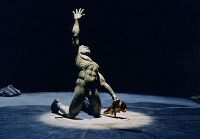 Physicality of the relation between animator and inanimate object is just one of the aspects of the strong sensuality that features his works, whose fulcrum is always the feeling. This has many faces in Shakespeare's works, is soaked in lust and death in Rigoletto, is erotic and sweet in Achilles, or permeated with pungent British humour in Gilbert & Sullivan, and finally assumes all the possible shades of the love between the two main characters of Screen Play. Contrasts often exaggerated, colours use, choice of backgrounds, lighting and music contribute to exalt the pathos, but Purves' obsession for research of new expression forms goes beyond all of this. In Screen Play, in example, narration is accompanied by British gestures and each phrase seems taken from a Haiku, whilst the characters move according to the complex rules of No and Kabuki theatre. The gesture is anyway always a foundation in the construction of the action.
Physicality of the relation between animator and inanimate object is just one of the aspects of the strong sensuality that features his works, whose fulcrum is always the feeling. This has many faces in Shakespeare's works, is soaked in lust and death in Rigoletto, is erotic and sweet in Achilles, or permeated with pungent British humour in Gilbert & Sullivan, and finally assumes all the possible shades of the love between the two main characters of Screen Play. Contrasts often exaggerated, colours use, choice of backgrounds, lighting and music contribute to exalt the pathos, but Purves' obsession for research of new expression forms goes beyond all of this. In Screen Play, in example, narration is accompanied by British gestures and each phrase seems taken from a Haiku, whilst the characters move according to the complex rules of No and Kabuki theatre. The gesture is anyway always a foundation in the construction of the action. 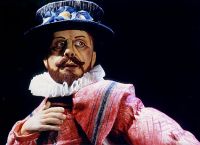 A further layering of meanings in Purves' works is the reflection on the artistic creation process. Both in Next and in Gilbert & Sullivan, we can see the troubles an artist goes through to find a patron, a producer, or simply an occasion to show his talent. The life of a creative person is in fact an endless ethical fight between everyday needs and aesthetic urge, between serial production and masterwork.
A further layering of meanings in Purves' works is the reflection on the artistic creation process. Both in Next and in Gilbert & Sullivan, we can see the troubles an artist goes through to find a patron, a producer, or simply an occasion to show his talent. The life of a creative person is in fact an endless ethical fight between everyday needs and aesthetic urge, between serial production and masterwork. 




